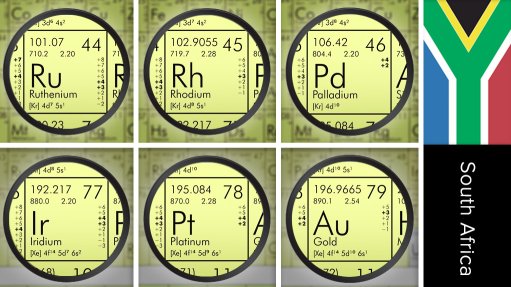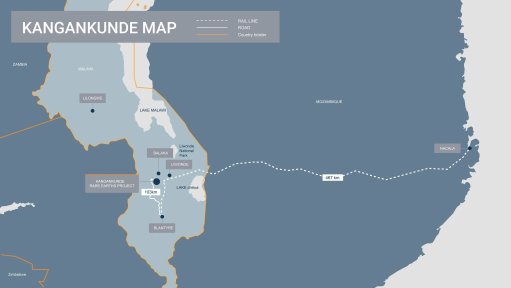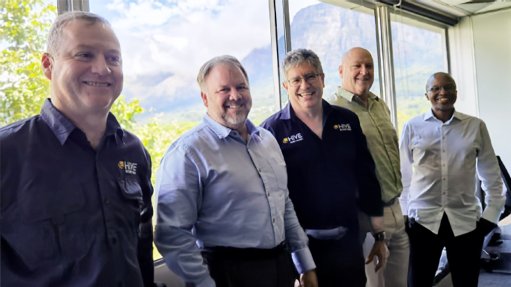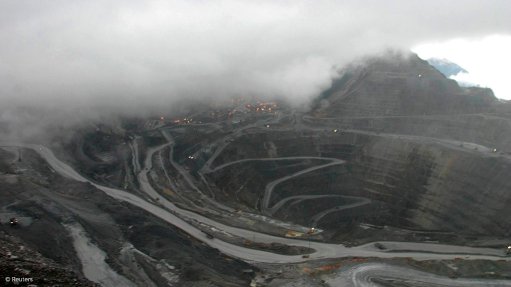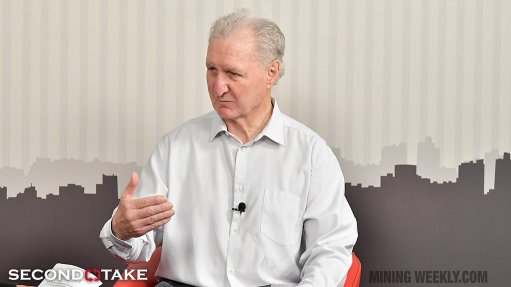Global ewaste increases to record levels
A
record 53.6-million tonnes of electronic waste (ewaste) was generated globally in 2019, up 21% in five years, as higher consumption rates of electric and electronic equipment, short life cycles and few options for repair fuelled the world’s fastest-growing domestic waste stream.
The United Nations’ (UN’s) ‘Global Ewaste Monitor 2020’ predicts that global ewaste – discarded products with a battery or plug – will reach 74.7-million tonnes by 2030, almost a doubling of ewaste in just 16 years.
Last year’s ewaste weighed significantly more than all the adults in Europe or as much as 350 cruise ships the size of the Queen Mary 2, enough to form a 125-km-long line, with only 17.4% of ewaste collected and recycled, the report shows.
This means that gold, silver, copper, platinum and other high-value, recoverable materials conservatively valued at $57-billion were mostly dumped or burned rather than collected for treatment and reuse.
The documented ewaste for 2019 mainly comprised 17.4-million tonnes of small equipment, 13.1-million tonnes of large equipment and 10.8-million tonnes of temperature exchange equipment.
Screens and monitors, lamps and small information technology (IT) and telecommunication equipment represented 6.7-million tonnes, 4.7-million tonnes and 900 000 t respectively.
During the year under review, Asia generated the greatest volume of ewaste – some 24.9-million tonnes – followed by the Americas at 13.1-million tonnes and Europe at 12-million tonnes, while Africa and Oceania generated 2.9-million tonnes and 700 000 t of ewaste respectively.
Europe had the highest collection and recycling rate of 42.5% during 2019, while Asia ranked second at 11.7% and the Americas and Oceania at 9.4% and 8.8% respectively.
Africa had the lowest collection and recycling rate of 0.9%.
“Ewaste quantities are rising three times faster than the world’s population and 13% faster than the world’s gross domestic product during the last five years,” says International Solid Waste Association president Antonis Mavropoulos.
In per capita terms, discarded ewaste in 2019 averaged 7.3 kg for every person on Earth.
Europe ranked first worldwide in terms of ewaste generation per capita at 16.2 kg, while Oceania was second at 16.1 kg, followed by the Americas at 13.3 kg.
Asia and Africa were much lower at 5.6 kg and 2.5 kg per capita respectively.
Over the past five years, temperature exchange equipment ewaste was up 7%, large equipment increased 5%, and lamps and small equipment increased 4%, collectively increasing the fastest in total weight terms.
This rise is mostly attributed to the growing consumption of those products in lower-income countries, where those products improve living standards, the E-Waste Monitor shows.
Small IT and telecommunication equipment have been growing more slowly, while screens and monitors have shown a slight decrease of 1%, owing to lighter flat-panel displays replacing heavy cathode ray tube monitors and screens.
The fate of about 82.6%, or 44.3-million tonnes, of the ewaste generated in 2019 is uncertain, and its whereabouts and the environmental impact vary across the different regions.
Comments
Announcements
What's On
Subscribe to improve your user experience...
Option 1 (equivalent of R125 a month):
Receive a weekly copy of Creamer Media's Engineering News & Mining Weekly magazine
(print copy for those in South Africa and e-magazine for those outside of South Africa)
Receive daily email newsletters
Access to full search results
Access archive of magazine back copies
Access to Projects in Progress
Access to ONE Research Report of your choice in PDF format
Option 2 (equivalent of R375 a month):
All benefits from Option 1
PLUS
Access to Creamer Media's Research Channel Africa for ALL Research Reports, in PDF format, on various industrial and mining sectors
including Electricity; Water; Energy Transition; Hydrogen; Roads, Rail and Ports; Coal; Gold; Platinum; Battery Metals; etc.
Already a subscriber?
Forgotten your password?
Receive weekly copy of Creamer Media's Engineering News & Mining Weekly magazine (print copy for those in South Africa and e-magazine for those outside of South Africa)
➕
Recieve daily email newsletters
➕
Access to full search results
➕
Access archive of magazine back copies
➕
Access to Projects in Progress
➕
Access to ONE Research Report of your choice in PDF format
RESEARCH CHANNEL AFRICA
R4500 (equivalent of R375 a month)
SUBSCRIBEAll benefits from Option 1
➕
Access to Creamer Media's Research Channel Africa for ALL Research Reports on various industrial and mining sectors, in PDF format, including on:
Electricity
➕
Water
➕
Energy Transition
➕
Hydrogen
➕
Roads, Rail and Ports
➕
Coal
➕
Gold
➕
Platinum
➕
Battery Metals
➕
etc.
Receive all benefits from Option 1 or Option 2 delivered to numerous people at your company
➕
Multiple User names and Passwords for simultaneous log-ins
➕
Intranet integration access to all in your organisation





